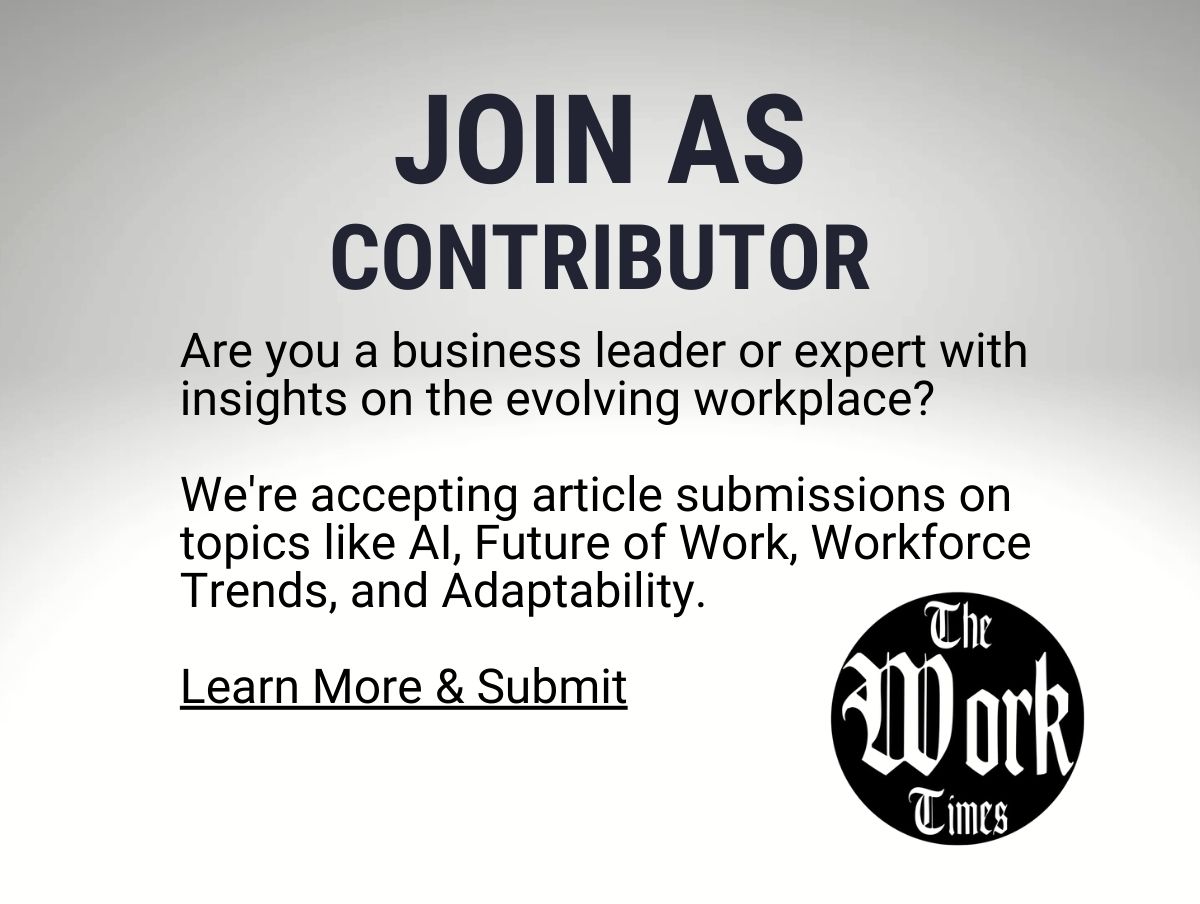JPMorgan’s Canary Wharf Bet: Reimagining the Office, the City, and the Future of Work
When a global bank declares it will build a new headquarters in the heart of a financial district, the message is more than corporate real estate news. It is a declaration of confidence in a city’s future, a commitment to a workforce, and a signal about how work itself will be organized for the coming decades. JPMorgan’s announcement that it will construct a new headquarters in Canary Wharf lands at a moment when offices, cities and labour markets are all being re-evaluated. For the Work community — HR leaders, workplace strategists, policymakers and people who think deeply about how and where work gets done — this is a story about places, people and purpose.
More than stone and steel: what a headquarters represents today
A headquarters used to be a single-story symbol: a city-facing tower, a logo on the skyline, a place where decisions were concentrated. Today those meanings have multiplied. A headquarters still signals permanence and leadership, but it also has to solve new problems. It must be a magnet for talent who have options. It must be a stage for culture to be performed and renewed. It must be a laboratory for hybrid practices and a public actor in a neighbourhood that depends on it.
By choosing Canary Wharf, JPMorgan is reinforcing a long view of London’s financial geography. Canary Wharf is not just an office location; it is a community with transit arteries, retail ecosystems, schools, and residents who depend on its vibrancy. A new headquarters here is a bet that the dense, collaborative, and civic aspects of urban work still matter — and that investments in place-making will pay social and economic dividends.
For employees: a new centre for connection
For workers, the significance is immediate. Hybrid work has taught teams how to decouple time and place: meetings that once required being in the same room can now happen across time zones. At the same time, people crave meaningful connection, mentorship and the unplanned collisions that spark creativity. A modern headquarters is being designed to enable both: focused individual workspaces, fluid collaborative hubs, informal social spaces and technology that erases friction.
That design imperative alters talent strategies. Recruitment pitches are no longer just about compensation and brand; they are about proximity to peers, access to knowledge networks, and a sense of belonging. A thoughtfully designed HQ becomes a competitive advantage for attracting and retaining people who want both flexibility and community.
For the local economy: multiplier effects and renewed urban energy
Large corporate headquarters create ripples. Jobs directly within the bank are only the first wave. Support services, suppliers, cafes, transport, and small businesses see increased demand. Training programmes and apprenticeships that sit alongside a major employer feed talent pipelines and increase social mobility. Choosing Canary Wharf brings resources and attention back into a neighbourhood that has been central to London’s economic story for decades.
This sort of commitment also encourages civic investment. Public realm improvements, transport upgrades and new residential offerings follow anchors that promise long-term occupancy. A city’s ability to plan for housing, transit and services depends on stable demand; large headquarters are a form of stability. For urban planners and local communities, this announcement is a lever — a chance to negotiate how private investment can deliver public value.
For workplace innovation: an integrated digital and physical strategy
Building a headquarters in 2025 is not the same as building one in 1995. Technology is now a design material. High-bandwidth collaboration tools, augmented meeting rooms, sensors that manage space utilisation, and digital platforms that unify in-office and remote participants are all part of the brief. The new HQ will likely be as much about the software and services running beneath the floors as the glass and concrete above them.
That integration forces a rethink of management practices. Teams will need to be deliberate about who comes to the office and why; leaders will have to craft rituals that make physical presence meaningful; and workplace analytics will be used to iterate on design. When the digital and physical are conceived together, the office becomes adaptive rather than fixed — a place that evolves with the needs of its people.
Culture, inclusion and the democratization of access
There is an ethical dimension in play. A headquarters is a cultural amplifier. How a company designs its spaces, who it hires locally, and how it opens the workplace to broader communities all reflect values. Canary Wharf has grown from docks to a skyline of international commerce. Today, with rising attention on inclusion and social outcomes, anchors must balance prestige with accessibility.
Opening spaces for community events, partnering with local training providers, and creating transparent pathways into jobs are ways a headquarters can translate corporate presence into civic progress. For workers, that means opportunities for mentorship, entry-level roles and career ladders that are anchored in a real, proximate economy.
Sustainability and resilience: building for climate and continuity
Environmental commitments are now must-haves. New buildings are judged on their emissions, energy efficiency, and resilience to climate risks. The new headquarters is an opportunity to set higher standards for how workplaces meet sustainability goals, from on-site energy systems and materials to transport programmes that reduce single-occupancy commutes.
Resilience also means preparing for societal shocks, whether pandemics, supply chain disruptions or rapid shifts in talent markets. Designing flexible spaces, redundant systems, and adaptive operational plans makes a headquarters a long-term asset rather than a stranded cost.
The policy and industry ripples
Major corporate commitments change conversations about zoning, public transport and tax policy. Governments watch such moves and may be incentivized to invest, or to rethink regulations that shape where people live and work. For the property sector, a new flagship headquarters signals continued demand for high-quality, well-connected office stock — and it may influence where other firms place their bets.
For the Work community, this is a reminder that corporate decisions are intertwined with public decisions. Workplace strategies don’t exist in a vacuum; they interact with transport planning, housing supply and local labour markets. Collaborative planning between companies, cities and communities is essential if the full potential of such investments is to be realized.
What this means for the future of work
At its best, a new headquarters is a platform: for innovation, for career development, for civic partnership, and for demonstrating how large organisations can be anchors of progress. It is a counterpoint to the narrative that offices are obsolete. Instead, it reframes the question: what roles should offices play in a hybrid era?
They can be places where the intangible aspects of work — trust-building, onboarding, serendipity — are cultivated. They can be centres of learning where apprentices, graduates and mid-career professionals sharpen skills. They can be civic partners that knit corporate scale to local needs. And they can be experiments in sustainability and human-centred design.
Practical takeaways for workplace leaders
- Think of headquarters as strategic platforms, not just buildings; align space design with talent strategy and culture.
- Measure value beyond square footage — evaluate collaboration outcomes, talent retention, and local economic impact.
- Design for adaptability so the workplace can evolve with technology and changing patterns of work.
- Use major investments as leverage for community partnerships and sustainable urban improvements.
- Be explicit about the rituals and reasons for being in the office to make presence purposeful.
Conclusion: a city, a workforce and a wager on togetherness
JPMorgan’s decision to build a new headquarters in Canary Wharf is a contemporary kind of wager. It bets that a dense urban workplace still offers unrivalled value: for collaboration, culture and community. For those who design work, manage teams, and chart the future of cities, the announcement offers a live case study. It challenges organisations to think of offices not as relics to be abandoned, nor factories to be filled, but as living infrastructure that, when done well, enriches workers and the places they inhabit.
The next few years will show how such commitments translate into everyday experiences: the cadence of hybrid schedules, the accessibility of opportunity, the quality of public space, and the ways in which a headquarters can be both a corporate home and a civic neighbour. For the Work community, this is more than news. It is an invitation to shape how work — and the places that house it — evolve in service of people and cities alike.




























